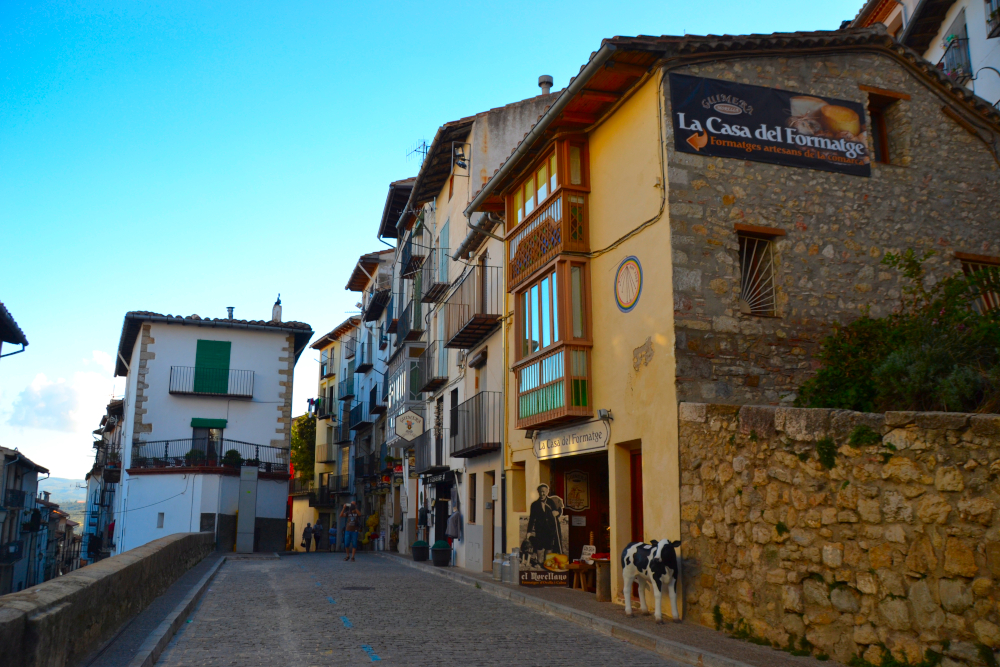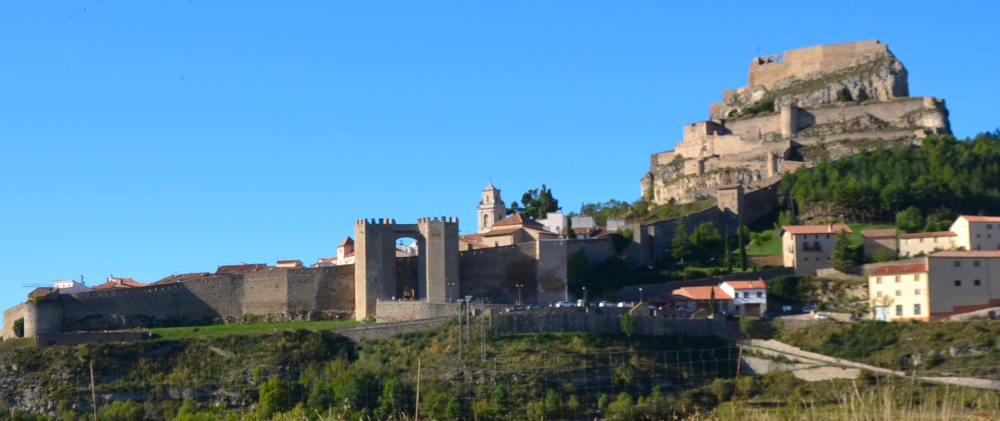
MORELLA: AN INTRODUCTION
Morella lies in the very north of the Comunidad Valenciana, some 50 kilometres inland from Vinaròs, and just 12 kilometres from the border with Catalunya. At close to 1,000m above sea level, it has long occupied a high strategic position between the plains of the river Ebro to the north and the coastal plains of Valencian to the south.
It is an ancient walled town whose history stretches back many centuries. Its name probably originates from 714 CE when Moorish forces took the town and named it ‘Maurella’. The castle which dominates the city is reputed to have been re-built by El Cid, who fought alongside Yusuf al-Mu’tamin against Sancho Ramírez, King of Aragon and Navarre, in the Battle of Morella in the early 11th century. The town changed hands between Moorish and Christian forces before being finally taken by Blasco de Aragón in 1232 and garrisoned by Jaime I in 1239.
Due to its position, the town has been involved in many of the main military actions throughout the modern history of Spain, including the War of Spanish Succession (siding with victorious Felipe V), the Napoleonic Wars, the Carlist Wars, and the Spanish Civil War.
The old town is still completely enclosed by high stone walls with seven gates, of which the Portal de San Miguel is one of the most dramatic and well-known as it is the main entrance into the town from the car-parks.
How to get to Morella
Morella is about a 3hr 15min drive from Xàbia. The following route from Google Maps leads to the municipal car-park just outside the walls.
WHERE WE STAYED
Hotel Rey Don Jaime
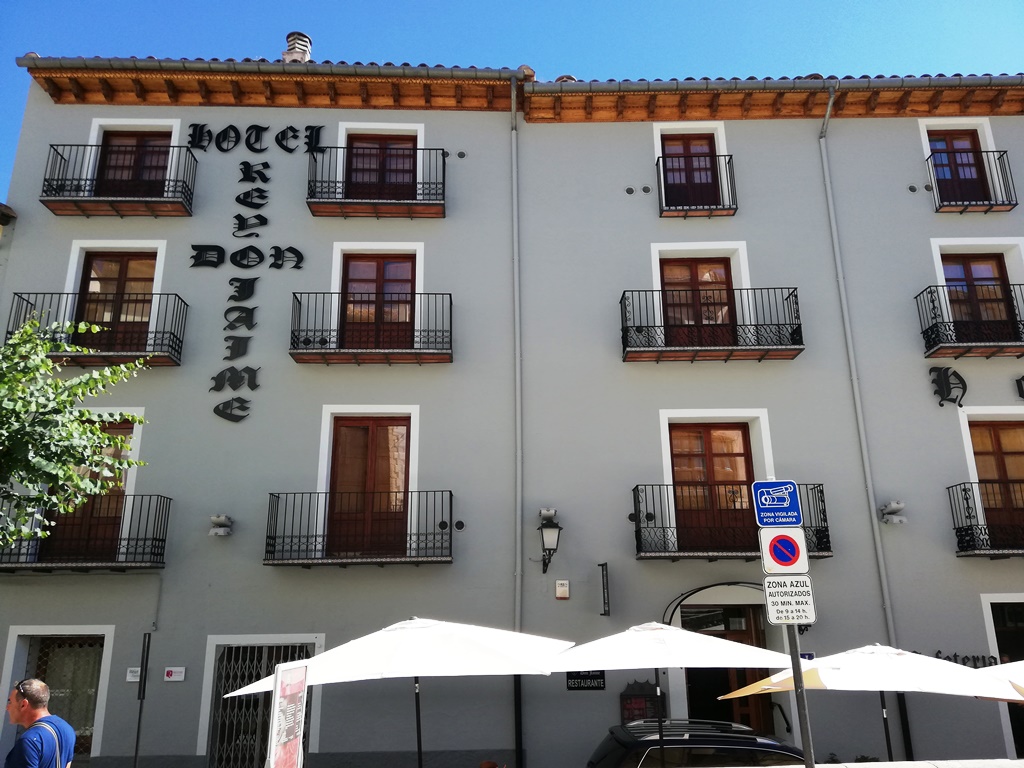
This grand hotel is just over 100m from the Portal de San Miguel within the high walls of the town on what is essentially Morella’s main street with its bars and restaurants as well as plenty of tourist shops. It has a cafeteria, a restaurant and a bar.
Our room faced away from the town and afforded fantastic views across the walls to the mountains. Decorated in a more traditional style, the spacious room had a decent-sized double bed, a large en-suite bathroom and a small balcony. We’d wager that these rooms are a lot quieter than those than overlook the main street.
There is private parking available but we chose to park in the municipal car-park outside the walls and walk in, although you’d probably want to arrive early to secure a space. In the busier summer months, it’s probably wiser to reserve a space with the hotel. It costs around 10 euros a day.
WHAT WE SAW
The Castle
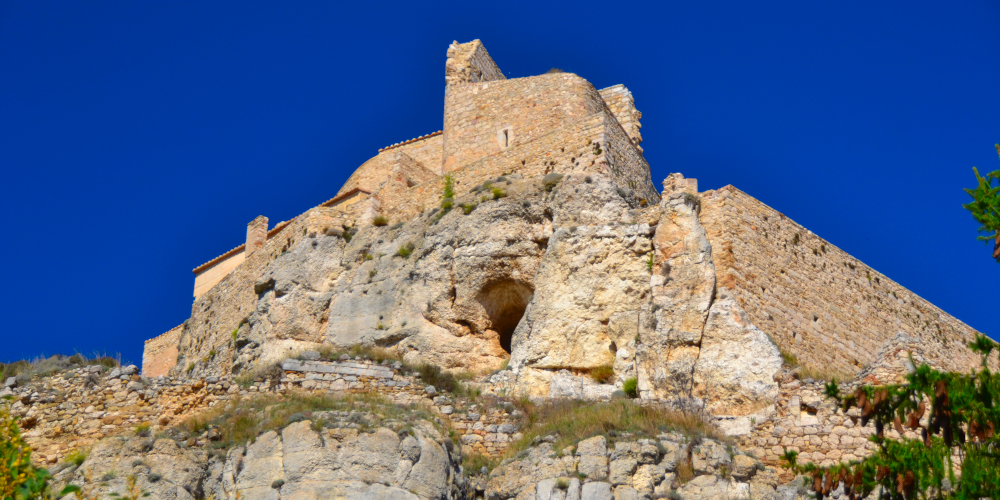
OPENING HOURS
Summer: 11.00am – 7.00pm (Easter to mid-October “Puente del Pilar”)
Winter: 11.00am – 5.00pm (Mid-October “Puente del Pilar” to Easter)
Closed
ADMISSION
General Admission: 3.50 euros
Reduced Admission*: 2.50 euros
Group Admission: 1,50 euros (for groups of more than 25 people)
Free Entry for children aged under 6 years accompanied an adult or accredited teachers
* Over 65s, children aged 6 to 16 years, students under 25, Carnet Joven and disabled people.
The castle of Morella is regarded as one of the most imposing fortresses in the Mediterranean region, a stronghold that has developed from prehistoric origins through the Iberian, Roman, Muslim and Christian eras. Its solid walls have witnessed the passage of important characters in Spanish history: Abderraman III, El Cid, Jaume I, King Fernando de Antequera, Benedict XIII “el Papa Luna”, San Vicente Ferrer, Prince Carlos de Viana and Carlist General Cabrera. As you walk up the hillside through the various stages of the castle, you learn the history of the castle and the town before emerging in the wide Plaza de Armas (at a height of 1,072m) from where there is a great view over the red roofs of the town and beyond towards the mountains. It’s definitely worth the effort but take plenty of water as there’s nothing at the top.
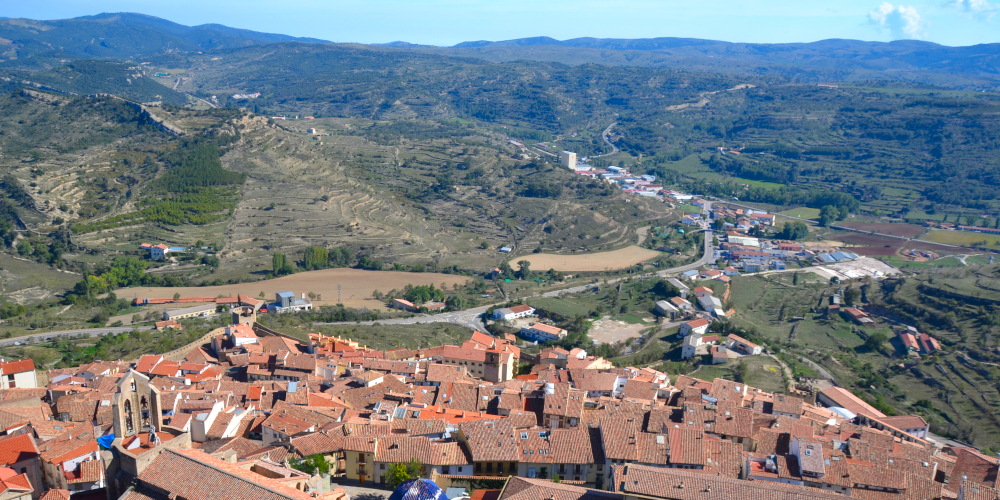
The visit is actually in two parts though. After paying the modest admission fee, you pass into the gardens of the ancient convent of Sant Francesc – there are public toilets here if you need them – and you can visit the chapel and the De Profundis room where there are medieval wall paintings depicting the dance of death.
Basílica Arciprestal de Santa María la Mayor
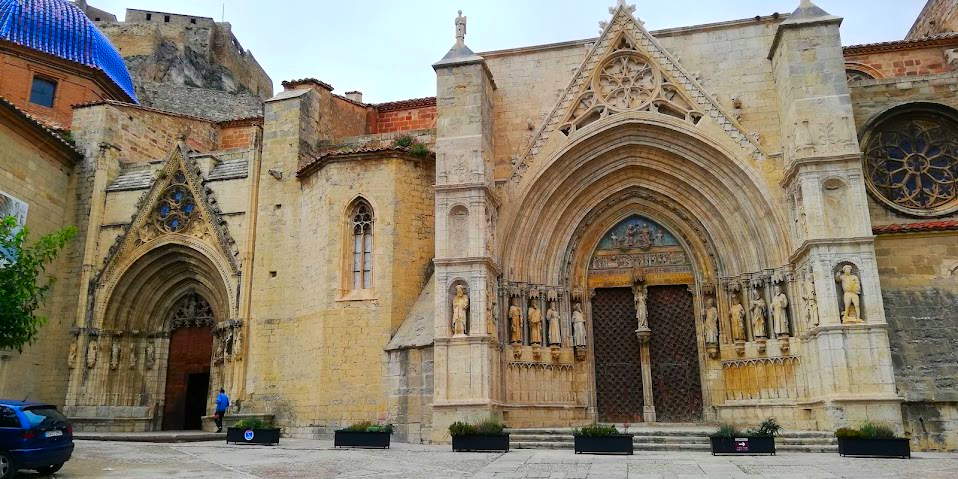
OPENING HOURS
Tuesday to Sunday: 11:00-14:00 and 16:00-18:00
Closed Mondays
ADMISSION
General Admission: 3.00 euros
Reduced Admission*: 2.50 euros
Free Entry for children aged under 6 years accompanied an adult or accredited teachers
* Over 65s, children aged 6 to 16 years, students under 25, Carnet Joven and disabled people.
The Basilica Santa María la Mayor is one of the most beautiful temples in the Mediterranean, a true jewel of religious Gothic architecture. Passing through the main door, you enter the huge interior where you can marvel at the wonderful spiral staircase on which there are beautiful carvings, which leads up to the choir vault which seems to be suspended by magic above the floor.
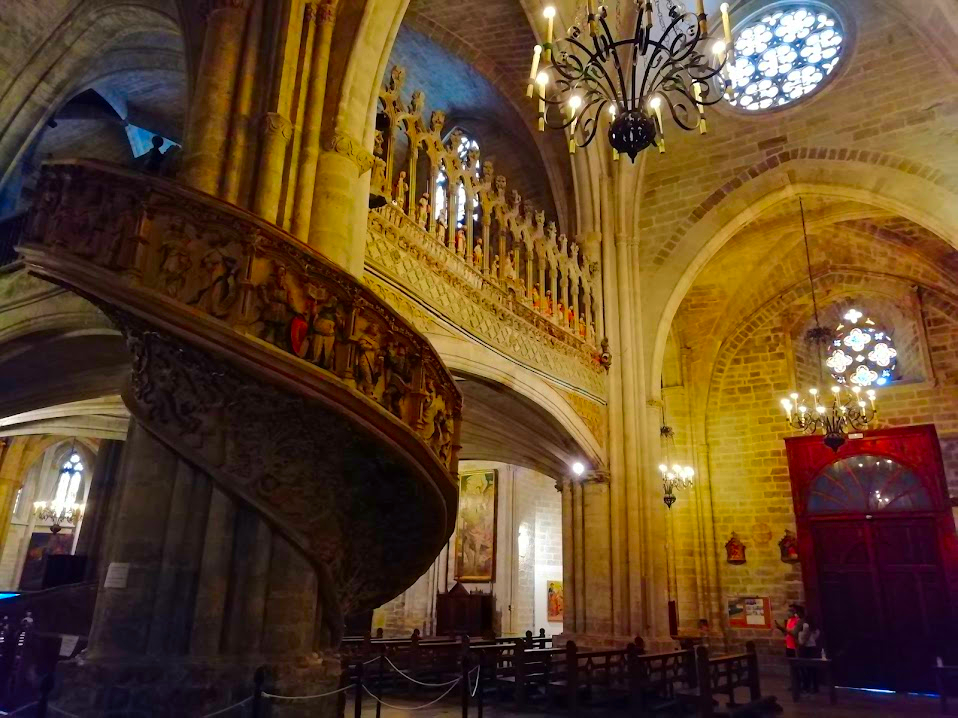
At the far end, the main altar shines golden beneath an incredible dome, the columns separated by religious paintings whilst the organ dates back to the early 18th century.
To the left of the altar, there is a museum of religious paintings and golden artefacts used by the church which is worth a visit.
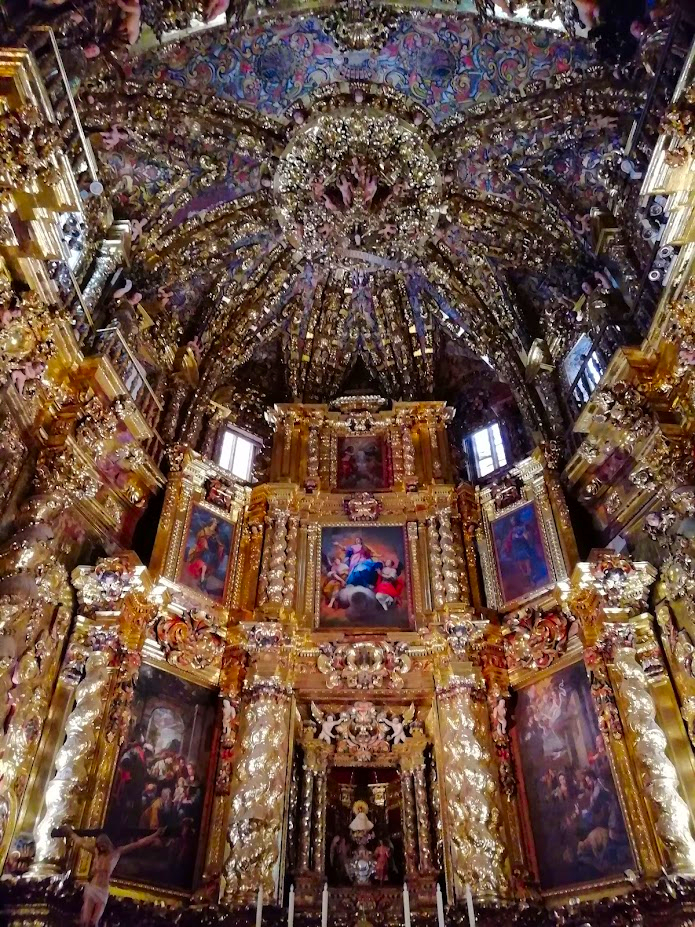
Also worth a visit.
Torres de San Miguel
These two twin towers were built in the 14th century and provide the starting point for a tour of the history of the town’s walls and its towers. A flight of stairs can be climbed to the top of one of the towers, which are connected at the top. You can explore a short section of the wall and then cross over and descend the other tower. Inside each of them there are exhibition areas and information panels to enjoy.
Admission: 1,50 euros
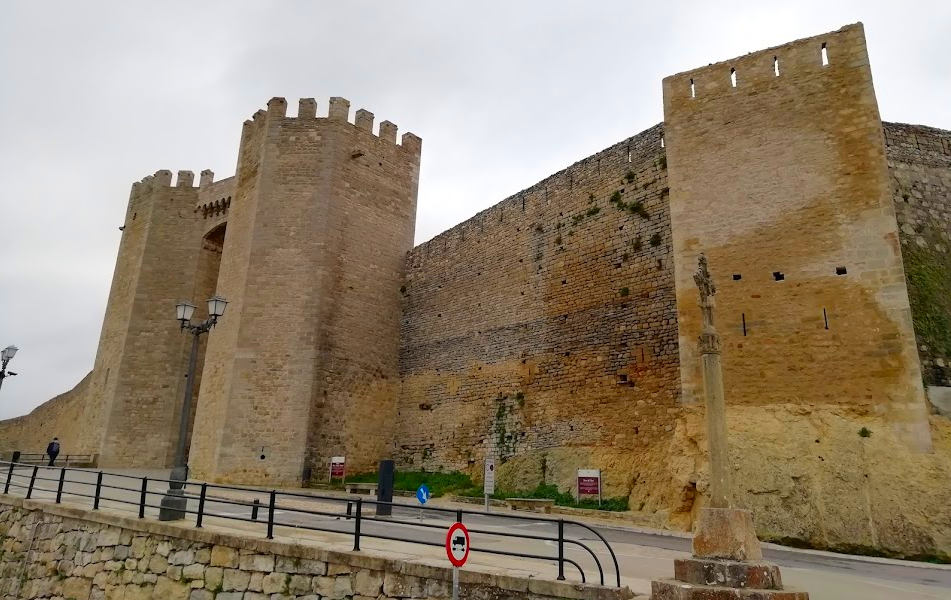
Ayuntamiento
The 14th century town hall building is right in the heart of the historic centre and is worth a visit to see its Gothic council chambers and old prison as well as view the exhibitions that are hosted in its impressive halls.
Admission: Free
Sexenni Museum
Discover more about the Sexenni fiesta, which is held every six years in honour of the Virgin of Vallivana, the patron saint of Morella and has been declared of a fiesta of National Tourist Interest and Asset of Intangible Interest.
Admission: Free with joint ticket.
Museu Temps de Dinosaures
There is a permanent exhibition dedicated to dinosaurs next to the chapel of San Miguel right next to the huge gateway of the same name that we used to enter the walled old quarter.
Admission: 2 euros (reduced 1,50 euros)
Aqúeducte de Sant Llúcia
About five minutes from the gate of San Miguel are the remains of an aqueduct that was built in the early 14th century to carry water from the Vintaxos spring via a series of tunnels and raised sections to the town. There are more examples of this infrastructure further on, another 10 minutes’ walk, in the hills beyond. The walk is worth it for a great view of the walled town.
WHERE WE REPLENISHED
Que de Que
Ideal for: lunch
This no-nonsense bar offers little more but some excellent value-for-money tapas and well-stuffed bocadillos with refreshing soft drinks, wine and beer. It seems to be a popular place to eat lunch for those visiting the town but isn’t tempted to charge through the nose for its fare.
Hotel Rey Don Jaime
Ideal for: dinner
It just so happened that our hotel also had a decent restaurant with tables on a small terrace outside – small enough to warrant pre-booking to avoid disappointment – and we enjoyed a very nice dinner al fresco whilst also enjoying the early evening buzz in the town.
WHAT WE THOUGHT OF MORELLA
We could feel its long history everywhere and it had a very friendly feel about it. Those with plenty of energy could probably cover all the main sights a day, maybe staying overnight either side. One word of warning though: since it is a popular day-trip / weekend destination, a lot of restaurants were closed on Sunday evening, having apparently offered an extra long lunch session.
